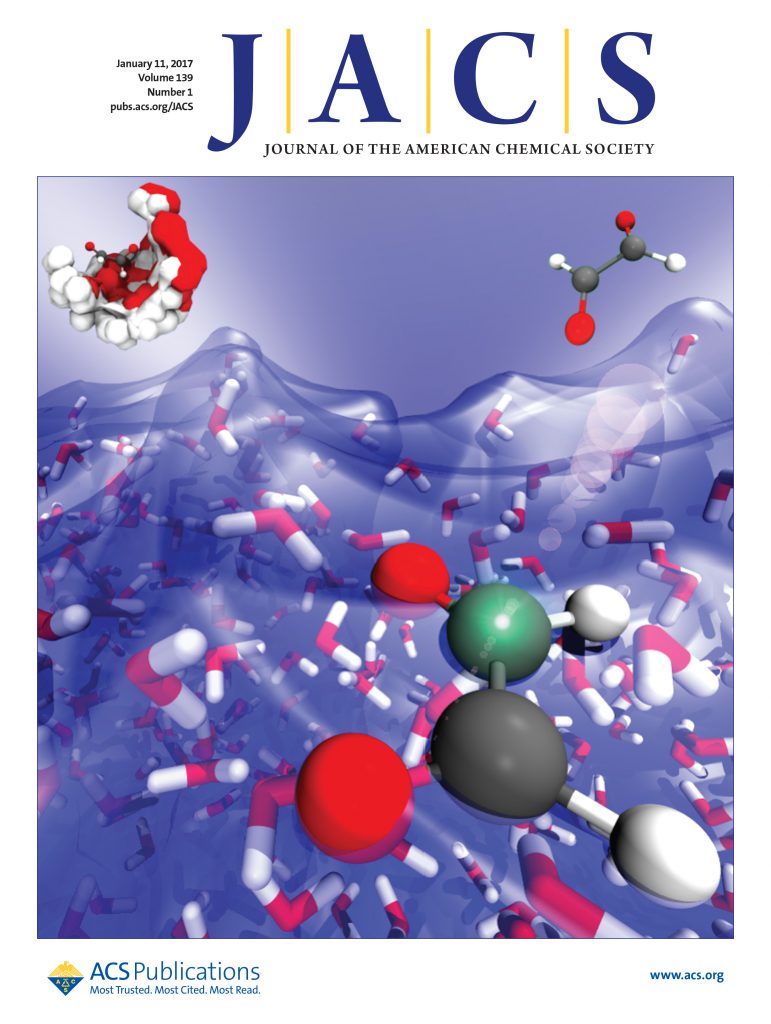Tiara Ni Clusters for Electrocatalytic Nitrate Reduction to Ammonia with 97% Faradaic Efficiency.
IF 15.6
1区 化学
Q1 CHEMISTRY, MULTIDISCIPLINARY
引用次数: 0
Abstract
The electroreduction of nitrate (NO3-) for sustainable ammonia (NH3) production has recently emerged as a green process to solve water contamination and produce valuable chemicals. In this study, we developed Ni6@CuFe-LDH composites comprising tiara Ni6(SC2H4COOH)12 (Ni6) clusters anchored on the edges of 2D CuFe-LDH (LDH: layered double hydroxides) nanosheets via electrostatic interactions. The Ni6@CuFe-LDH catalyst exhibits high electrochemical performance in nitrate reduction reaction (NO3RR). Specifically, the Ni6@CuFe-LDH gives rise to an excellent faradaic efficiency of ∼97%, significantly surpassing the ∼73% FE of the pristine CuFe-LDH, with the NH3 productivity (0.91 mmol mg-1 h-1) being similar to that of the CuFe-LDH. Mechanistic studies reveal that the superior electrocatalysis of Ni6-based catalysts is primarily due to the synergistic interaction between Ni6 clusters and CuFe-LDH, which alters the rate-determining step (RDS) of the desorption of *NH3 species (for CuFe-LDH) to the *NO3 → *NO2 step (for Ni6@CuFe-LDH); this is corroborated by the control experiments of NO2RR, in situ Raman and infrared spectroscopies, and computational approaches. In all, these efforts push forward the NO3RR research to study the structure-property relationships from the micro/nano-level to the precise atomic-level.Tiara Ni簇电催化硝酸还原制氨的法拉第效率为97%。
电还原硝酸盐(NO3-)用于可持续氨(NH3)生产是最近出现的一种解决水污染和生产有价值化学品的绿色工艺。在这项研究中,我们开发了Ni6@CuFe-LDH复合材料,该复合材料由tiara Ni6(SC2H4COOH)12 (Ni6)簇组成,通过静电相互作用固定在二维CuFe-LDH (LDH:层状双氢氧化物)纳米片的边缘。Ni6@CuFe-LDH催化剂在硝酸还原反应(NO3RR)中表现出较高的电化学性能。具体来说,Ni6@CuFe-LDH产生了优异的法拉第效率(~ 97%),显著超过了原始CuFe-LDH的~ 73% FE, NH3生产率(0.91 mmol mg-1 h-1)与CuFe-LDH相似。机理研究表明,Ni6基催化剂具有优异的电催化性能主要是由于Ni6簇与CuFe-LDH之间的协同作用,将*NH3 (CuFe-LDH)脱附的速率决定步骤(RDS)改变为*NO3→*NO2步骤(Ni6@CuFe-LDH);NO2RR的控制实验、原位拉曼光谱和红外光谱以及计算方法证实了这一点。总而言之,这些努力推动了NO3RR研究从微纳米水平到精确原子水平的结构-性能关系的研究。
本文章由计算机程序翻译,如有差异,请以英文原文为准。
求助全文
约1分钟内获得全文
求助全文
来源期刊
CiteScore
24.40
自引率
6.00%
发文量
2398
审稿时长
1.6 months
期刊介绍:
The flagship journal of the American Chemical Society, known as the Journal of the American Chemical Society (JACS), has been a prestigious publication since its establishment in 1879. It holds a preeminent position in the field of chemistry and related interdisciplinary sciences. JACS is committed to disseminating cutting-edge research papers, covering a wide range of topics, and encompasses approximately 19,000 pages of Articles, Communications, and Perspectives annually. With a weekly publication frequency, JACS plays a vital role in advancing the field of chemistry by providing essential research.

 求助内容:
求助内容: 应助结果提醒方式:
应助结果提醒方式:


